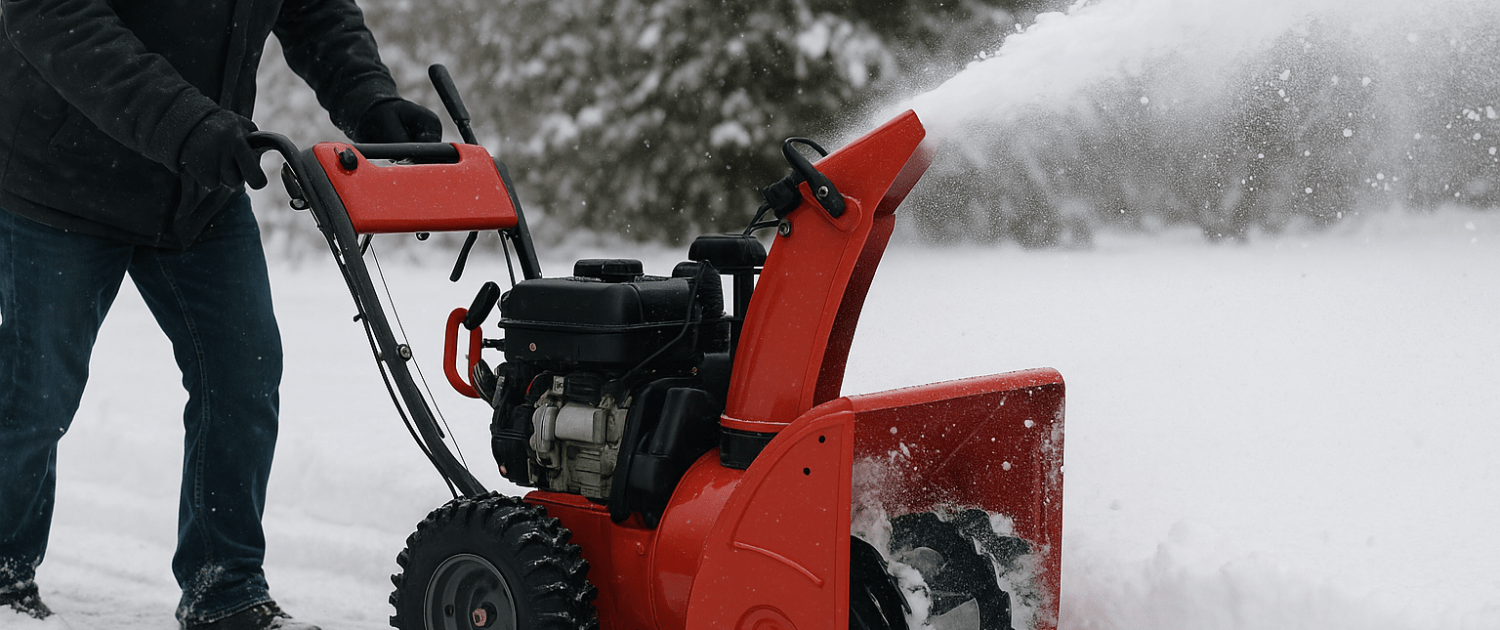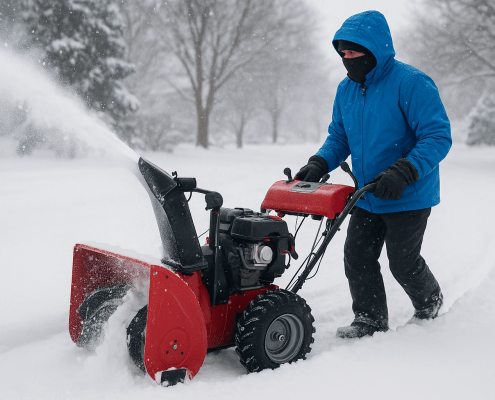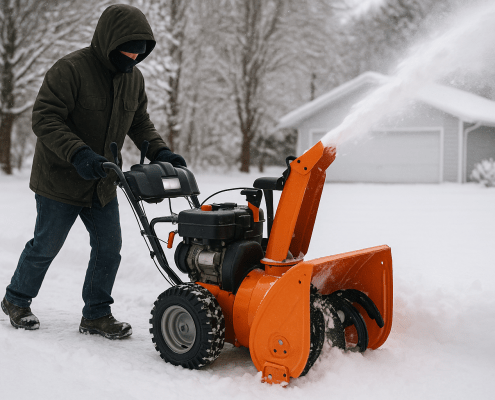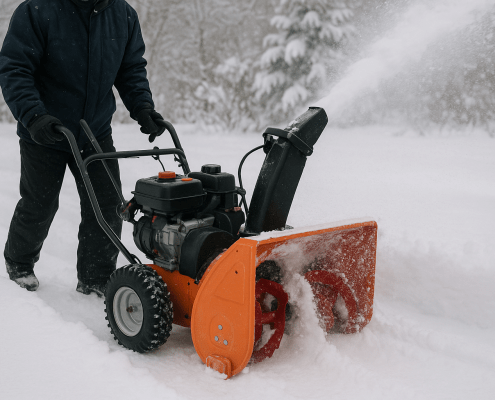Snow Blower Maintenance Tips for a Smooth Winter
Steven E / Monday May 12, 2025
Just like any machine, making sure to maintain your snow blower is key to keeping it running smoothly through the winter. Skipping basic upkeep can result in annoying breakdowns just when you need your snow blower the most.
We’ve got you covered on all you need to know to maintain your snow blower properly. We’ll go over the maintenance tasks to do before winter comes and the routine upkeep during the snowy season. Stick to these tips, and your snow blower will keep up its A-game in clearing snow all season long.
If you need any replacement parts for your snow blower, you can enter your model number at AppliancePartsPros.com to order them. Most orders arrive in just two business days, and we have thousands of free guides to show you how to install your new parts.
The information in this article may not apply to your specific appliance model. We recommend consulting your manufacturer’s documentation or contact us with any questions.
Why proper snow blower maintenance matters
Maintaining your snow blower properly is important for the best performance and longevity. Adhering to the manufacturer’s recommended schedule for basic maintenance offers several advantages. First, it extends the lifespan of your snow blower, making sure it’s reliable for years to come. Second, regular maintenance prevents unexpected winter breakdowns, allowing your machine to efficiently clear snow when needed most. Third, well-maintained equipment operates more effectively, reducing the risk of costly repairs in the future.
Furthermore, proper maintenance enhances safety during operation. Issues like loose bolts or poor traction can make your snow blower hazardous to use, emphasizing the importance of regular upkeep. So, rather than considering maintenance a hassle, view it as an investment in your snow blower’s performance and longevity, resulting in fewer breakdowns and enhanced efficiency in the long run.
Snow blower maintenance tasks before winter
The key to avoiding issues is preventative snow blower maintenance before winter arrives. Set aside an afternoon to focus on these tasks:
1. Change oil and fuel
For gas-powered snow blowers, old oil, and gas should be completely drained and replaced prior to winter. This step helps prevent gumming up carburetors and builds up.
- Use a siphon or drain plug to remove all old gas from the tank. Dispose of it properly.
- Add fresh fuel treated with a fuel stabilizer to extend shelf life.
- Check the manual for oil capacity and drain oil. Replace with new, winter-weight oil.
- Wipe any spilled oil and dispose of the old oil properly.
2. Inspect belts, bolts, and mechanical parts
It’s important to inspect key components and make sure nothing is loose, worn, or damaged:
- Check all belts. Replace any that are cracked, excessively worn, or damaged.
- Tighten any loose nuts, bolts, screws, cords, etc. Hardware can vibrate loose over time.
- Identify any parts that are worn or frayed such as belts, starter cords, etc. Replace as needed.
3. Replace common wear items
Several parts like shear pins and scraper blades experience predictable wear and should be proactively replaced:
- Install fresh spark plug(s). Check the manual for the correct plug gap and torque.
- If excessively worn, replace scraper blade/skid shoes. Measure against new ones.
- On single-stage models, check auger rubber paddles. Replace if worn to indicator holes.
4. Lubricate moving parts
Lubricating parts keeps them moving freely, prevents rust, and reduces wear:
- Grease auger shaft zerks until fresh grease purges the seals.
- Apply anti-seize compound to the auger shaft so shear pins can be removed.
- Lubricate chute directional control linkage and cables.
- Oil chains, gears, and impeller bearings per manual specifications.
5. Check tires and adjust hardware
Proper inflation and positioning of components are key for safe operation:
- Examine tires for adequate tread and damage. Maintain proper tire pressure.
- Make sure skid shoes are adjusted to the proper height to avoid ground contact.
- Confirm track drive tension is set correctly.
- Adjust scraper and skid heights to optimal positions.
6. Test functionality
Once maintenance tasks are complete, it is important to perform a comprehensive test run. Begin by adding fuel and starting the engine, allowing it to warm up sufficiently. Make sure you have smooth operation of the throttle and choke positions throughout their entire range. Thoroughly examine the functionality of the steering, controls, and accessories to validate their proper operation. Replace any non-functional, frayed, or cracked components to uphold peak performance.
Maintenance during the snow season
Once snow season arrives, stay vigilant with these tasks:
1. Clear ice and snow buildup
After each use:
- Clear snow and ice from the auger, impeller, and chute. Clogged snow can damage parts.
- Wipe down the exterior with a brush/squeegee to remove clinging snow and prevent icing.
- Spray the inside of the chute with non-stick cooking spray to prevent buildup.
2. Check and replace shear pins
Shear pins are designed to break instead of the gearbox when the auger jams:
- Replace any broken shear pins immediately so the auger function is restored.
- Confirm correct OEM shear pins are installed. The wrong size can damage the gearbox.
- Keep spare shear pins on hand so you can quickly replace them when needed.
3. Maintain proper fuel level
Always start with fresh treated gas, never use old gas:
- Use a fuel stabilizer like Sta-Bil when filling the tank to keep fuel fresh for storage.
- Avoid bulk storing gas long-term. Replace with new fresh gas every 30-60 days.
4. Re-lubricate as needed
Re-apply lubricant if parts become dry. Lubricate more frequently with heavy use:
- Add grease to auger shaft zerks mid-season if needed.
- Re-oil chains, gears, and bearings. Lubricate controls/linkages.
- Wipe off excess lubricant and dirt from parts.
5. Replace any damaged parts
Don’t wait on damaged components – replace them immediately:
- Swap out any auger parts, belts, controls, etc if damaged during use.
- Bent or cracked parts like augers will only worsen and cause further damage if not replaced promptly.
- Use OEM factory parts for proper fit and operation. Take your model number to AppliancePartsPros.com to locate the correct part for your unit.
Recommended maintenance schedule
Refer to your owner’s manual maintenance schedule, but here are some general guidelines:
Before Season
- Change oil and gas
- Inspect belts/mechanical parts
- Replace worn parts
- Lubricate components
- Check hardware/accessories
Every Use
- Clear snow and ice buildup
- Wipe down exterior
After Every 5 Hours of Use
- Tighten any loosened hardware
- Check/replace shear pins
After Every 10 Hours of Use
- Check skid shoes and scraper blade for wear
- Lubricate the auger shaft again if needed
After Every 25 Hours of Use
- Change oil (more often if using a 2-stroke engine)
After Every 50 Hours of Use
- Lubricate all components again
- Change gas, inspect/replace the spark plug
After Season
- Clean machine thoroughly
- Touch up paint as needed
- Prepare for storage per manual
More information
Thanks for reading! If you have any other appliance repair needs or projects, you can find more resources including our DIY blog at AppliancePartsPros.com. There, you can enter your model number to order the exact parts you need. Most orders arrive in two business days.
You can also reach our award-winning customer service team at 1-877-477-7278, chat with a pro on our website and watch thousands of free video tutorials on our YouTube channel.
With nearly a decade of experience in providing top-notch customer service regarding appliance parts and repair, Steven enjoys sharing practical advice, troubleshooting tips, and interesting information to help readers stay informed.





